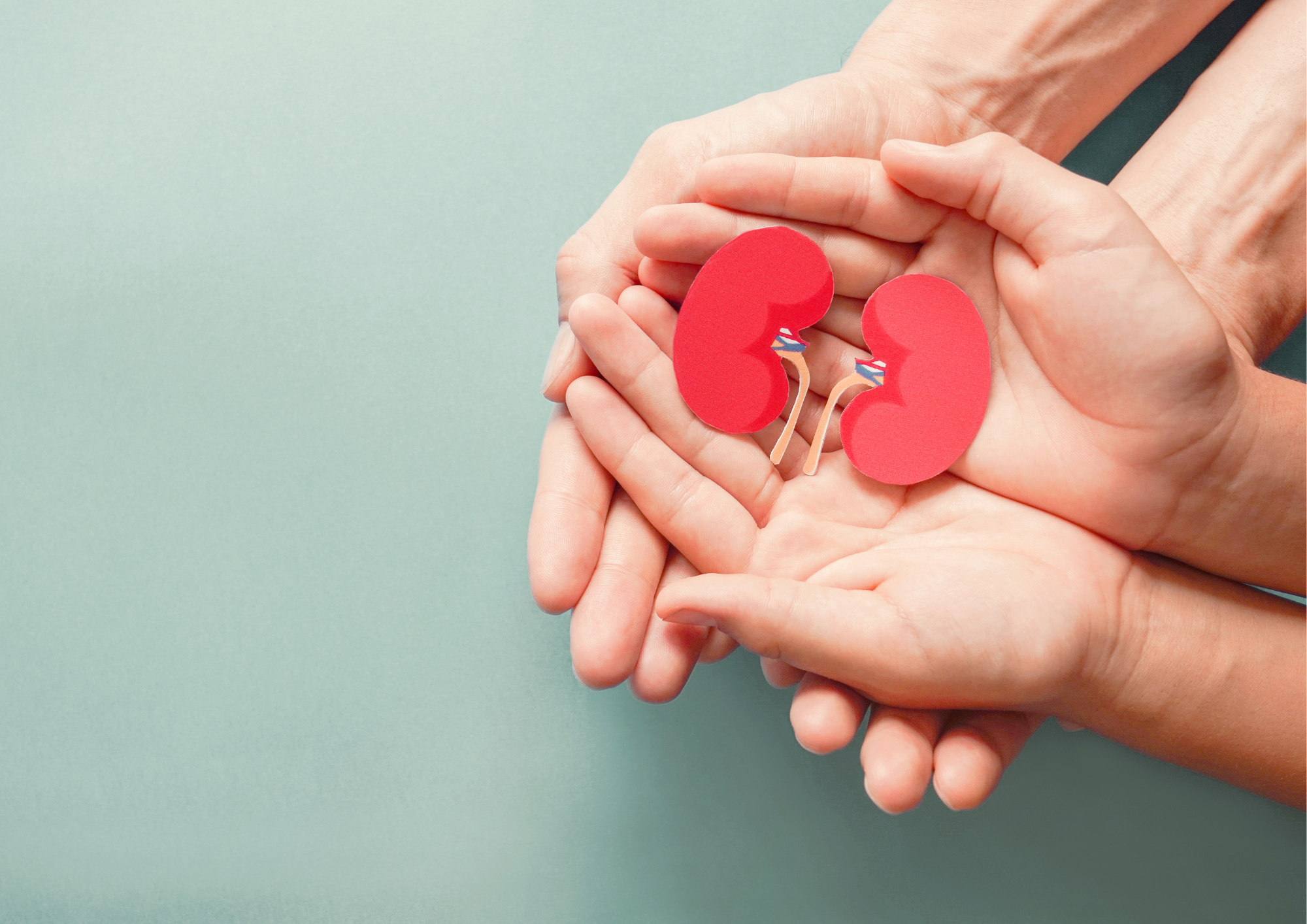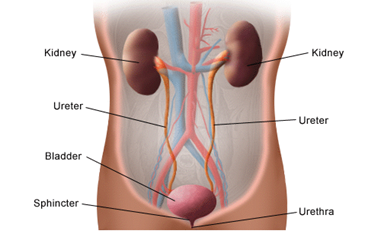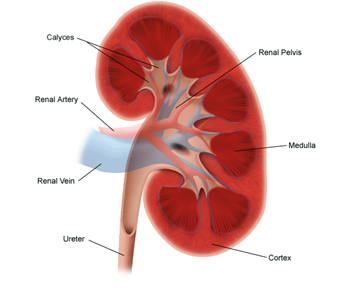What is Nephrology?
Nephrology refers to the study of the kidneys or renal system.

‘Nephrology’ sounds like a funny name for the study of kidneys, but it comes from the Greek ‘nephros’ meaning ‘kidney’ and the suffix ‘-logy’ which means ‘the study of.’ Our kidneys are an important part of our body as they help filter liquid waste from the body and keep chemicals such as potassium, sodium, and water in balance.
Here we detail the anatomy and physiology of each part of the renal system and the most common problems associated with it to help further your understanding of this system, its complexities, its purpose, and what can occur if it is not functioning adequately.
Anatomy and Physiology of the Renal System
The renal system’s function is to filter blood and create urine as a waste by-product. The organs of the urinary system include the kidneys, renal pelvis, ureters, bladder, urethra, and sphincter muscles.

The body takes nutrients from food and converts them into energy. After the body has taken the food components it needs, waste products are left behind in the bowel and the blood.
The kidney and urinary systems help the body to remove liquid waste called urea, and keep chemicals, such as potassium and sodium, and water in balance. Urea is produced when foods containing protein, such as meat, poultry, and certain vegetables, are broken down in the body. Urea is carried in the bloodstream to the kidneys, where it is removed along with water and other wastes in the form of urine.
Anatomy and Physiology of the Kidney

This pair of organs is located below the ribs toward the middle of the back. Their function is to:
- Remove waste products and medicines from the body.
- Balance the body’s fluids.
- Balance a variety of electrolytes.
- Release hormones to control blood pressure.
- Release a hormone called erythropoietin to control red blood cell production.
- Help with bone health by controlling calcium and phosphorus.
The kidneys remove urea from the blood through tiny filtering units called ‘nephrons’. Each nephron consists of a ball formed of small blood capillaries (glomerulus) and a small tube called a renal tubule. Urea, together with water and other waste substances, forms urine as it passes through the nephrons and down the renal tubules of the kidney.
The structural units of the kidneys, which produce urine are the nephrons, of which there are almost 1,000,000 in each kidney. Each nephron is a long extremely fine tube that is closed, expanded, and folded into a double-walled cuplike structure at one end. This structure, called the renal corpuscular capsule, or Bowman’s capsule, encloses a cluster of capillaries (microscopic blood vessels) called the glomerulus. The capsule and capillaries together make up a renal corpuscle, also called a Malpighian body. Blood flows into and away from the glomerulus through small arteries (arterioles) that enter and exit the glomerulus through the open end of the capsule. This opening is called the vascular pole of the corpuscle.
Anatomy and Physiology of the Ureters
The ureters are narrow tubes that carry urine from the kidneys to the bladder. Muscles in the ureter walls tighten and relax which forces urine downward, away from the kidneys. If urine backs up or stands still, a kidney infection can develop. About every 10 to 15 seconds, small amounts of urine are emptied into the bladder from the ureters.
Anatomy and Physiology of the Bladder
This triangle-shaped, hollow organ is located in the lower belly. It is held in place by ligaments that are attached to other organs and the pelvic bones. The bladder’s walls relax and expand to store urine. They contract and flatten to empty urine through the urethra. The typical healthy adult bladder can store up to 2 cups of urine for 2 to 5 hours. The nerves in the bladder alert a person when it is time to urinate or empty the bladder.
Anatomy and Physiology of the Urethra
The urethra tube allows urine to pass outside the body. The brain signals the bladder muscles to tighten. This squeezes urine out of the bladder. At the same time, the brain signals the sphincter muscles to relax to let urine exit the bladder through the urethra. When all the signals happen in the correct order, normal urination happens.
Anatomy and Physiology of the Sphincter Muscles
These circular muscles help keep urine from leaking by closing tightly like a rubber band around the opening of the bladder.
Facts about Urine
- Normal, healthy urine is a pale straw or clear yellow colour.
- Darker yellow or honey-coloured urine often means you need more water.
- A darker, brownish colour may mean a liver problem or severe dehydration.
- Pinkish or red urine may mean blood in the urine.
Common Problems of the Renal System
There are many disorders of the renal system; however, some of the more common problems of the urinary system include:
Urinary Tract Infection (UTI)
A UTI occurs when an infection, usually caused by bacteria, enters the urinary tract. The most common types of UTI include:
- Cystitis: an infection of the bladder lining and the most common lower urinary tract infection.
- Urethritis: an infection of the urethra.
- Pyelonephritis: an infection of the upper urinary tract, which is very serious because it affects the kidneys.
Kidney Stones
Kidney stones develop when waste chemicals in your urine form hard crystals that clump together. The stones may stay in the kidney or travel down the urinary tract into the ureter. Sometimes, tiny stones move out of the body in the urine without causing too much pain. But if the stones don’t move, common symptoms include severe pain in the lower back, blood in your urine, nausea, vomiting, fever and chills, or urine that smells bad or looks cloudy.
Urinary Retention
Urinary retention is being unable to empty your bladder, which can be acute or chronic.
- Acute urinary retention: If you can’t pass urine even though you feel the need to, and your bladder is full.
- Chronic urinary retention: People with chronic urinary retention can urinate, but do not completely empty the urine from their bladders. This can be a slow-developing and long-lasting medical condition.
Enlarged Prostate
Because a man’s urethra passes through his prostate, swelling or enlargement of this gland can affect his ability to pass urine. This is one of the most common signs of possible prostate problems.
Incontinence
The loss of bladder control is a common and often embarrassing problem. The severity ranges from occasionally leaking urine when you cough or sneeze to having an urge to urinate that is so sudden and strong you do not get to a toilet in time.
Chronic kidney disease
Chronic kidney disease (CKD) refers to all conditions of the kidney affecting the filtration and removal of waste from the blood for 3 months or more.
At Claro, we assist people with many different types of needs and can help you or a loved one balance your kidney needs to continue living a happy, healthy, and independent life. To get in touch with us click ‘talk to us’ above or call us on 1300 303 770.
Some resources to learn more:
Australian Institute of Health and Welfare. (2022). Chronic kidney disease: Australian facts. https://www.aihw.gov.au/reports/chronic-kidney-disease/chronic-kidney-disease/contents/summary
Johns Hopkins Medicine. (2022). Anatomy of the Urinary System. https://www.hopkinsmedicine.org/health/wellness-and-prevention/anatomy-of-the-urinary-system
Ogobuiro., I & Tuma., F. (2021). Physiology, Renal. National Library of Medicine. https://www.ncbi.nlm.nih.gov/books/NBK538339/
Stanford Medicine. (2022). Anatomy and Function of the Urinary System. https://www.stanfordchildrens.org/en/topic/default?id=anatomy-of-the-urinary-system-85-P01468



